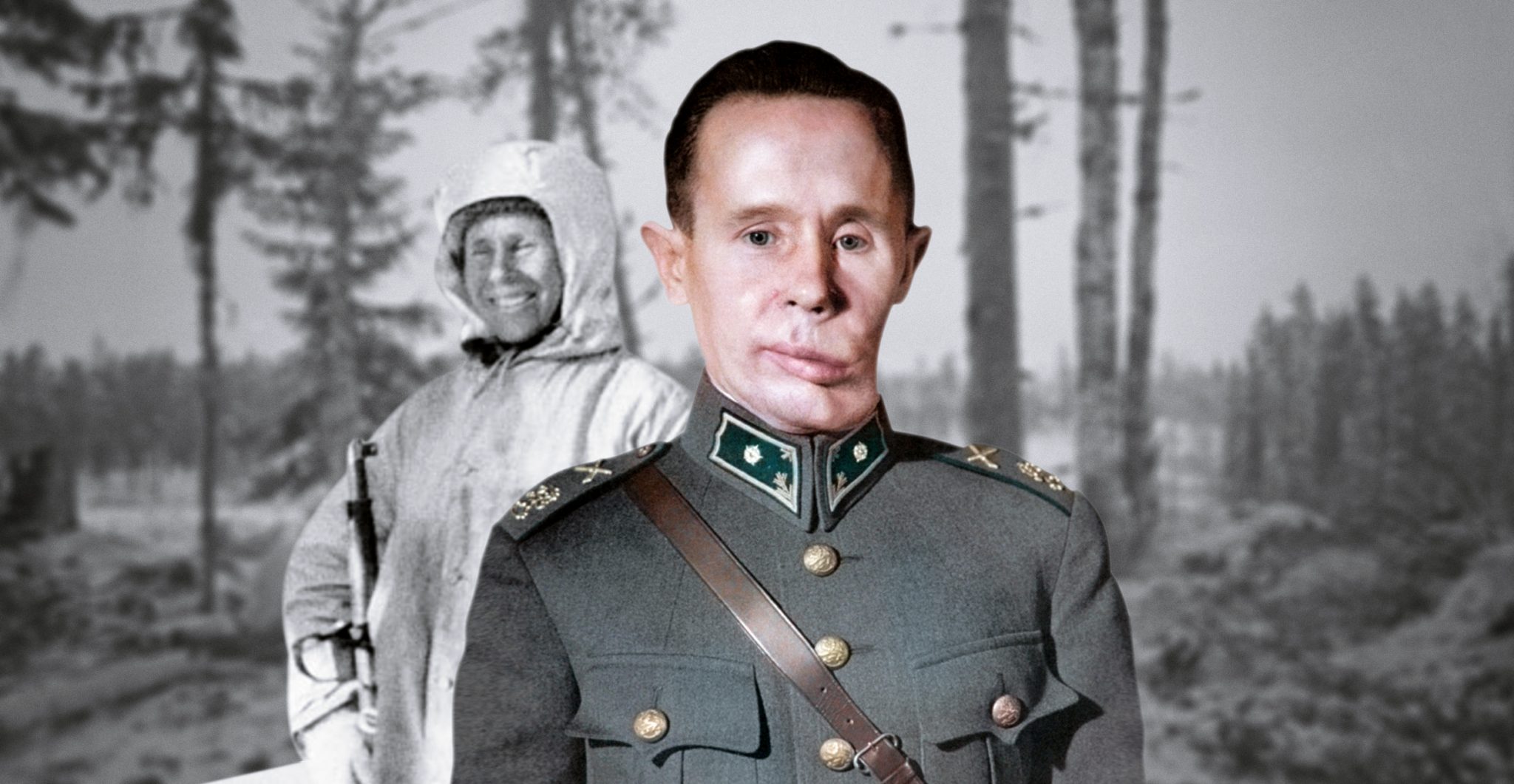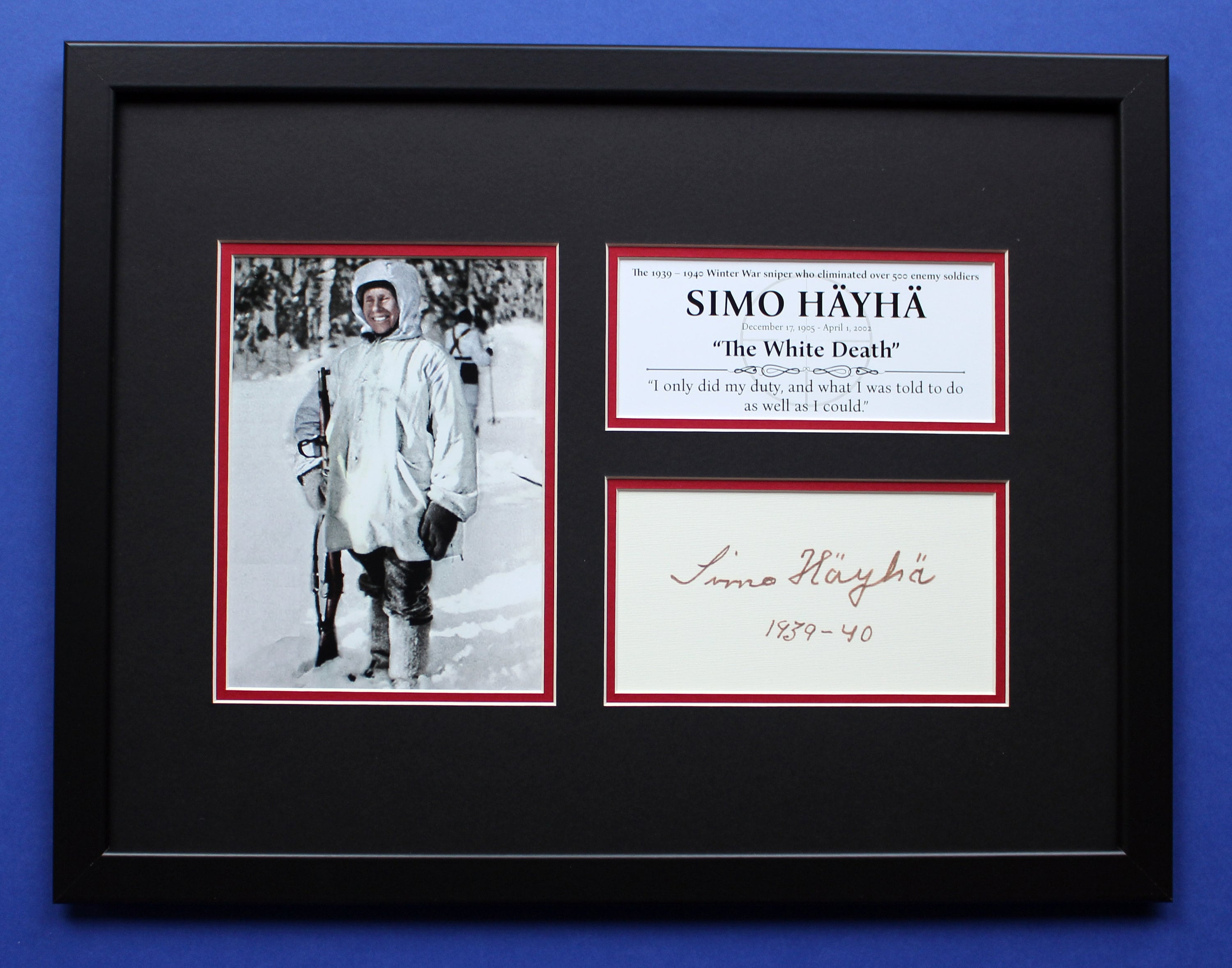Old Simo Hayha - The White Death was Finland's (and, arguably, the country's) most famous and most famous shooter. During the Soviet-Finnish war of 1939-1940, he suffered around 500 to 542 casualties.
The technical situation was bad. The Soviet Union attacked Finland during their relationship with Nazi Germany. Their army had a painfully short period to prepare, and Stalin's purges ruined the effectiveness of the Red Army.
Old Simo Hayha

For example, they moved the part of Ukraine where the winter was not so mild compared to the work in Finland.
Simo Häyhä: The Deadliest Sniper In History
On November 29, 1939, the foreign press in Manila, where the border incident between Finland and the Soviet Union goes to the Winter War.
Finland had few main roads and only one railway which forced the army to operate with tactical and strategic movement. Russian infantry, artillery, and air units were scattered, but the Russians still had the advantage of numbers and surprise. In addition, the Fins had few allies to help them.
Finnish soldiers gather breakfast in a field kitchen during "additional refresher training" on the Karelian Isthmus on October 10, 1939.
The Finns had prepared a defense that took full advantage of the rugged semi-tundra terrain, charging boxes, fences, and reinforced defense belts along a possible Russian advance.
The Top Ten Deadliest Snipers In History
Another member of the Finnish guard team was Simo Häyhä. He was armed with a bodyguard rifle, a Sako M28-30, and dressed in white winter camouflage (which was often undetectable by his enemies).
He preferred metal objects to telescopes, as they allowed him to show the enemy a smaller target. Since he was shot by the anti-detective, this was an important point for him. It also allowed him to avoid lifting his head to use the telescopic sight.
The views were more reliable in cold weather and would not be as foggy as the range. Häyhä could hide the gun more easily because there were no lenses for the sun to reflect through.

Perhaps the most important factor was that Häyhä had no previous training with firearms, and therefore chose not to switch to the Soviet rifle (m/91-30 PE or PEM).
The Formidable Simo Häyhä — The Finnish Sniper Nicknamed “white Death”
Soviet tracks at Lake Kianta, Suomussalmi during the Finnish pursuit in December 1939. Nordic skier Timo Murama is shown.
As the Russians advanced towards Finland, Häyhä piled thick mounds of snow in front of his position to conceal himself, prepare his gun, and reduce the snow surges caused by the muzzle blast.
Sources report that he keeps snow in his mouth to prevent inhaling the steam from the cold air from giving him his position.
With these tactics he completed a record number of murders in just one hundred days with little daylight. This speaks of the intensity of the fighting in the winter war between Russia and Finland.
Iron Curtain Trail From Imatra To Parikkala • Bike Riding » Outdooractive.com
A Soviet T-26 Model 1937 "advancing fiercely", as described by the photographer, on the east side of the Kollaa River during the battle of Kollaa.
His career ended when he took a bullet to the chin in early 1940. Ironically, he survived and woke up from the wound the day the war between Russia and Finland ended. It took years for him to fully recover, but he lived into his 90s.
Archers don't win a war, but they are very useful in skirmishes. A sniper generally lowers enemy morale as soldiers begin to feel that any position is indefensible. Operationally, snipers can kill officers or key personnel, such as radio operators or snipers.

In the case of Finland and the people who remember it, the "White Death" was one of the main elements of Finnish propaganda. Finnish newspapers often described the invisible Finnish soldier, creating a legendary hero.
By Tapio Saarelainen
Remembering Marine Corps training, this is a vivid reminder of the power of one kid with a gun.
We must always remember that the industrial war was marked by coal and steel, and the modern war by computers and drones, but one soldier armed with a gun is always the heart of the battle. In 1939–40 between Finland and the Soviet Union, Simo Häyhä (1905–2002) was recorded as the deadliest man in history. Here, Tapio Saarelainen shares the story of the Finnish sniper and how he earned his nickname 'The White Death'...
According to an American study, it was found that 7,000 rifle shots were needed to kill one soldier during the First World War. During the Vietnam War this number increased to more than 25,000. Therefore, with more than 505 kills of Simo Häyhä, more than 13,550,000 bullets would be needed in Vietnam. He remains the deadliest shooter of all time.
Simo Häyhä was born on 17 December 1905 to Juho and Katriina (née Vilkko) Häyhä in the village of Kiiskinen in the municipality of Rautjärvi. This area was the former territory of Karelia in Finland, now part of Russia. He was a farmer by trade and enjoyed many different hobbies, including skiing, hunting and shooting.
How World's Deadliest Sniper 'the White Death' Shot Dead 500 Russians In Chilling History Lesson For Vladimir Putin
Häyhä fought for Finland against the Soviet Union in what history refers to as the 'Winter War', a conflict that took place during the winter of 1939–40. The Winter War began when he was 33 years old and on 17 December 1939, he celebrated his 34th birthday on the battlefield of Kollaa. He served 98 days with the 6th Battalion, Infantry Regiment 34. The war lasted only 105 days, but Simo Häyhä did not see its end - he was wounded and kept in hospital during the last week of the conflict.
During his 98-day reign of terror, Häyhä was unseen and unheard, but all the while he targeted Russian soldiers with deadly precision, once killing 25 men in one day. With attackers presenting such high-value targets on the battlefield, Simo's reputation as a Russian border marker soon arrived; they call it "White Death".
Häyhä demonstrates his shooting technique in a covered foxhole. Notice how he wore his gloves; are used to reduce movement of the device. The support hand is behind the trigger guard to give you the best position. (© Tapio Saarelainen)

On one occasion, after Häyhä killed an enemy sniper with just one shot, the Russians also tried to kill him with indirect fire, mortar fire, close to where he was. Amazingly, Häyhä was not injured or killed, emerging unharmed. One time, a cannon landed near where he was firing and tore the back of his greatcoat; Häyhä survived this with only a small scratch on his back.
Sniper Simo Häyhä
Yet for a soldier who spent so much time on the front line, Häyhä said he was never afraid. He treated his job like he treated hunting and was always thinking of new ways to stay hidden and deceive the enemy. He developed a subtle technique, such as pouring water on the snow in front of him so that the eruption of the mouths would not reveal his location by interfering with the light of the snow. He also became adept at using sounds, smoke and arrow fire to cover his movements while changing posture. With maps in short supply during the war, Häyhä relied on his memory to find the best hiding places.
His rifle was an M/28-30, the one he had before the war, without a telescope. It was a rudimentary weapon, but one that had been mastered through years of experience in preparation and tactics
Häyhä's skills are combined with his extensive shooting arrangements. During the night, he would visit his 'favourite' shooting locations, making any preparations and improvements he felt were necessary. His behavior can be described as very busy because of his dedication to the work he was doing: he cleaned his weapon more times than most soldiers; and perform maintenance before and after work. Especially in temperatures of -20°C in the winter in Finland, the guns needed to be properly stored to prevent jams.
His rifle was an M/28-30, the one he had before the war, without a telescopic sight. This rifle was a standard issued to a Finnish infantryman in the late 1930s and Häyhä preferred the reliability and consistency of fire of the model. It was a rudimentary weapon, but one that had been mastered through years of experience. His weapon was 'fixed' [fixed objects] to 150 metres, the standard combat distance of the time, which enabled him to quickly adjust to the correct position as required.
Simo Hayha: Nam ı Diğer 'beyaz Ölüm'
Another strange myth about snipers is that they climb trees to shoot the enemy. Häyhä laughed when asked about this. Not only will it make it harder to maintain a steady aim on the enemy, but if you are ever detected they will have no way to escape. Instead, Häyhä used hanging branches as cover, which gave him more protection and allowed him to stay strong.
Simo hayha movie, simo hayha film, simo pizza, simo hayha book, simo hayha call of duty 4, vodafone simo, simo hayha, 3d simo, hayha, simo, the white death simo hayha movie, simo hayha family

0 Comments